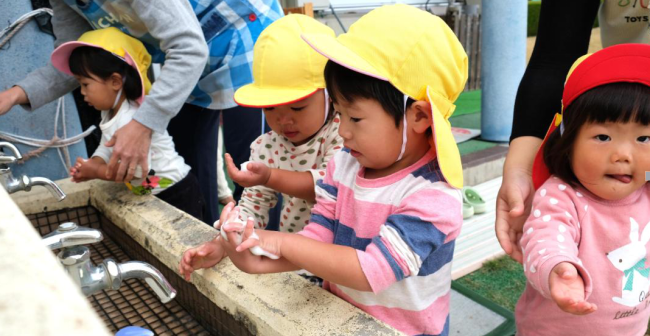
When Katsunori and Kaori Osaka had their first child, they were living in a small flat in Nagoya, a city of more than 2 million people in central Japan. Like many other young couples, they tried to raise their child in the city but found life among the apartment blocks too crowded and expensive. Eventually, they gave up. “When people are in their 20s and 30s, they can’t really afford to live in a bigger space in a city,” Katsunori said. “We knew that if we wanted to have more kids, we couldn’t do it there.”
Fourteen years later, the Osakas moved to Nagi, where Katsunori grew up. The agricultural town in western Japan has become a success story in the country’s efforts to improve its declining birthrate. With a population of about 6,000, Nagi feels a world away from Nagoya, and residents cite the lack of busy streets and crowds as reasons why it is a great place to bring up children. But they’re not the only benefits: Nagi also pays couples who live there to have children.
Families receive 100,000 yen ($879) for their first child, 150,000 yen ($1,335) for their second and as much as 400,000 yen ($3,518) for the fifth child born to the same family. This made Nagi a different city in Japan. Between 2005 and 2014, the town’s birthrate—based on the average number of children a woman has in her lifetime—doubled from 1.4 to 2.8, which is higher than the national average of 1.46.
Nagi has also paid the families other perks to improve the birthrate since 2004, including housing, free vaccinations, school fees and reduced nursery costs. And they appear to be working. In the neighborhood where the Osakas live, most couples have three or more children because they can and they want to.
本时文内容由奇速英语国际教育研究院原创编写,未经书面授权,禁止复制和任何商业用途,版权所有,侵权必究!(作者投稿及时文阅读定制请联系微信:400-1000-028)
1.Why did the Osakas give up bearing more babies in Nagoya?
A They thought Nagoya had too many people.
B They’ve already had some babies.
C They didn’t like to live in the apartment blocks.
D They couldn’t afford the high living expense and a bigger house.
解析:选D。细节理解题。根据第一段第二句的they tried to raise their child in the city but found life among the apartment blocks too crowded and expensive和第四句When people are in their 20s and 30s, they can’t really afford to live in a bigger space in a city可知是因为在他们在名古屋的生活开支太高,且无力购买更大的房子,因此放弃在那里生更多的孩子。故选D。
2.What kind of success did Nagi make?
A It made the agricultural products there popular.
B It greatly improved the declining birthrate.
C It had a lager population than other towns.
D It didn’t have so many busy streets built there.
解析:选B。细节理解题。根据第二段第二句The agricultural town in western Japan has become a success story in the country’s efforts to improve its declining birthrate.可知该城镇在日本的成功之处在于它提高了不断下降的人口生育率。故选B。
3.How much would a family in Nagi receive if they bore two babies?
A $879.
B $1,335.
C $2,214.
D $3,518.
解析:选C。推理判断题。根据第三段第一句的Families receive 100,000 yen ($879) for their first child, 150,000 yen ($1,335) for their second可知在奈吉生第一个孩子会得到879美元的津贴,生第二个孩子会得到1335美元的津贴,由此可知生两个孩子的家庭会得到2214美元的津贴。故选C。
4.What’s the main idea of the passage?
A Couples in Japan can bear many kids.
B Japanese couples live hard in Nagoya.
C Japan’s birthrate has greatly improved.
D A town in Japan pays couples for children.
解析:选D。主旨大意题。通读全文可知,本文主要讲述了日本一小镇为提高生育率而向育龄夫妇发放生育津贴,鼓励他们生育小孩的事。故选D。